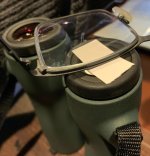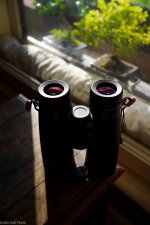Suffolk naturalist
Active member
This is my first post so apologies for a long-winded question. I’m interested to know your thoughts on the best alpha binocular for use with glasses on.
Here’s the context. After over 40+ years of regular birding I’m finally at a point where I need to wear glasses all the time. I’m long sighted, but even my distant vision is noticeably less sharp than it used to be - the curse of ageing and I guess it’ll only get worse... Adapting to birding with my glasses on has been a pleasure and a pain. It’s good that things are sharp again, but it’s clear some binoculars are better suited to use with glasses on than others. I have access to four good binoculars and would rank them as follows for glasses-on use:
Zeiss 7x42 classic BGATP* and Nikon 8x42 HGL = equal 1st.
Nikon 8x32 HG = 2nd
Zeiss 8x32 FL Victory = 3rd.
I mainly use the Zeiss 7x42 and love the wide field view but, while good, none of these binoculars would be today considered ‘state of the art’, so do you think I would gain much if I were to buy one of the current alpha models? A key consideration here is pragmatism. Much as I’d like to buy the best available, I’m conscious that my eyesight will only get worse from here - will I get the benefit from splashing the cash?
Here’s the context. After over 40+ years of regular birding I’m finally at a point where I need to wear glasses all the time. I’m long sighted, but even my distant vision is noticeably less sharp than it used to be - the curse of ageing and I guess it’ll only get worse... Adapting to birding with my glasses on has been a pleasure and a pain. It’s good that things are sharp again, but it’s clear some binoculars are better suited to use with glasses on than others. I have access to four good binoculars and would rank them as follows for glasses-on use:
Zeiss 7x42 classic BGATP* and Nikon 8x42 HGL = equal 1st.
Nikon 8x32 HG = 2nd
Zeiss 8x32 FL Victory = 3rd.
I mainly use the Zeiss 7x42 and love the wide field view but, while good, none of these binoculars would be today considered ‘state of the art’, so do you think I would gain much if I were to buy one of the current alpha models? A key consideration here is pragmatism. Much as I’d like to buy the best available, I’m conscious that my eyesight will only get worse from here - will I get the benefit from splashing the cash?
Last edited:











